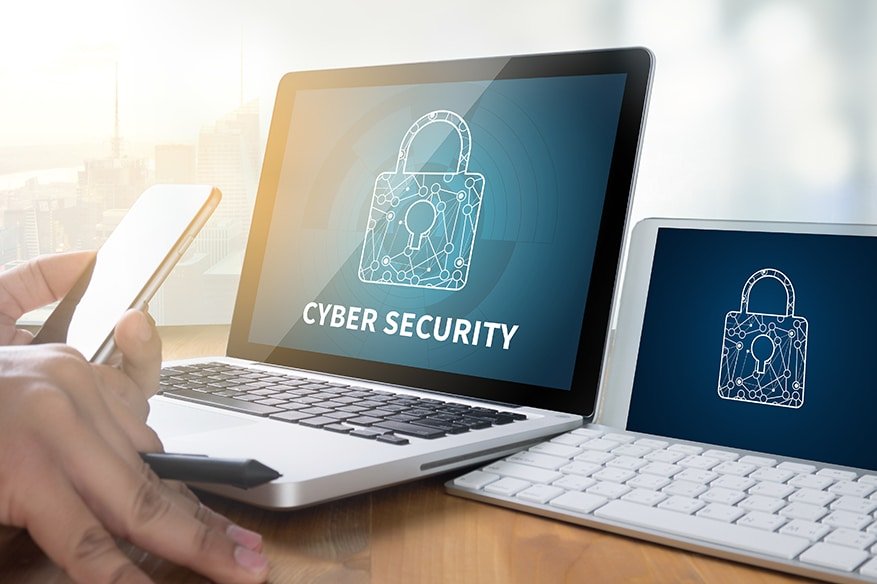Organizations Should Fear These 4 Cybersecurity Risks

For any organization looking to make a successful digital transformation, cybersecurity must be a top priority—hard stop. Damages and data loss related to cybercrime has now escalated to never-before-seen proportions, and reports suggest the harmful effects of cybercrime will soon incur an annual cost of around $6 trillion by 2021.
As a result, it has become increasingly important for organizations to take sufficient steps in protecting their systems and the data they hold, including their organizational as well as personal customer data. Businesses of all size must maintain a keen awareness of how cybersecurity is changing, how it can be applied, and most importantly how it can be compromised if they hope to come out on top.
Let’s take a look at some of today’s most major cybersecurity risks and think about ways to address them:
Risk One: No clear and comprehensive cybersecurity policy…
This is serious and not to be taken lightly. The absence of a cybersecurity policy can have dire consequences for businesses and their clients. Without the proper protocols and defensive measures in place, the entire organization essentially becomes vulnerable to every variety of cyberattack, even those that are not particularly well crafted. Remember, cybercriminals are always on the lookout for organizations who exhibit these vulnerabilities so they can target them without much effort. As a result, organizations today must have a clear and comprehensive cybersecurity policy in place, which has been implemented, maintained, tested, and reviewed according to best practices.
Here are some practical ways to minimize risk:
-
Increase awareness among employees about cybersecurity threats and attacks.
-
Ensure proper threat response mechanisms are in place and understand how to handle them.
-
Install firewalls, anti-malware solutions, and any other necessary security software.
-
Maintain proper password management and restricted access to critical files and folders.
-
Always identify all cybersecurity risks as promptly as possible and tackle them immediately.
-
Be careful when remotely accessing data, understand the inherent risks involved, and take precautions.
-
Implement a plan for secure data destruction of computer hardware.
-
Ensure there are no security lapses in core areas like the cloud, critical infrastructure, application, networks, and the like.
Risk Two: No security of IoT devices…
IoT devices are everywhere. From homes to major corporations, IoT connects people to their networks and offers convenience in most areas. However, securing IoT devices is critical to organizational security. If this effort is neglected, it’s highly likely a hacker will find entrance into organizational networks using the vulnerable ports of these IoT devices. For that reason, unsecured IoT poses a massive risk for anyone. Here’s how it can be effectively tackled:
-
When buying any IoT device, always make sure it comes with robust, built-in security features and has basic security features, including password-changing features and regular security upgrades.
-
Change admin password immediately after purchasing and set a strong, unique password.
-
Strengthen IoT security by closing up any loopholes that might lead to an active threat.
-
Always turn off the IoT device when it’s not being used!
Risk Three: No weapon against cryptojacking…
The secret installation of cryptocurrency-mining malware onto systems or networks using the existing password and the host computer’s CPU power—a process now fondly known as “cryptojacking”—poses one of the biggest cybersecurity risks of the modern age. These attacks not only seek to generate cryptocurrency without authorization, they also affect an organizations productivity level and overall operability. And unfortunately, experts also suggest cryptojacking attacks on organizations will likely become even more popular in the near future. But there are some effective methods of protection:
-
Always be on the lookout for signs of cryptojacking, like slow system performance.
-
Use network-monitoring solutions with AI power to detect cryptojacking attacks by analyzing system/network data.
-
Continually monitor the web server for any kind of file changes.
Risk Four: No patch management to handle organizational threats…
Everyone knows that patch management is critical to a strong security posture. But for it to be truly effective, it has to be fully complete and without holes or neglected areas. For this reason, implementing automated patch management, that handles the overall monitoring of the system without manual input, is a great idea. This option keeps businesses updated on threats, attacks, or vulnerabilities and offers the most current software patches available. The automation supports all OSs, all software, and all vendors, making it an invaluable solution for everyone.